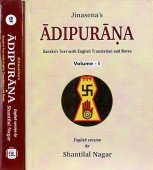Pancatantra, Pañcatantra, Pancan-tantra, Pamcatamtra: 9 definitions
Introduction:
Pancatantra means something in Hinduism, Sanskrit. If you want to know the exact meaning, history, etymology or English translation of this term then check out the descriptions on this page. Add your comment or reference to a book if you want to contribute to this summary article.
Alternative spellings of this word include Panchatantra.
In Hinduism
Purana and Itihasa (epic history)
Source: archive.org: Puranic EncyclopediaPañcatantra (पञ्चतन्त्र).—
A. General information. An ancient book of distinction written by the scholar Viṣṇuśarmā in the form of stories for the use of children to give them an idea of the different aspects of life. (See full article at Story of Pañcatantra from the Puranic encyclopaedia by Vettam Mani)

The Purana (पुराण, purāṇas) refers to Sanskrit literature preserving ancient India’s vast cultural history, including historical legends, religious ceremonies, various arts and sciences. The eighteen mahapuranas total over 400,000 shlokas (metrical couplets) and date to at least several centuries BCE.
Languages of India and abroad
Sanskrit dictionary
Source: DDSA: The practical Sanskrit-English dictionaryPañcatantra (पञ्चतन्त्र).—Name of a well-known collection in five books containing moral stories and fables by Visnugupta; पञ्चतन्त्रात्तथान्यस्माद् ग्रन्थादाकृष्य लिख्यते (pañcatantrāttathānyasmād granthādākṛṣya likhyate) H. Pr.9.
Derivable forms: pañcatantram (पञ्चतन्त्रम्).
Pañcatantra is a Sanskrit compound consisting of the terms pañcan and tantra (तन्त्र).
Source: Cologne Digital Sanskrit Dictionaries: Benfey Sanskrit-English DictionaryPañcatantra (पञ्चतन्त्र).—n. Five books, the title of a work. Para -tantra, adj. dependent upon another, Mahābhārata 13, 15. Su-tantrī, adj., n. tri, Melodious. Rit. 1. 3. Sva-tantra, adj. 1. independent, 2. of age. A-sna -tantra, adj. dependent, not of age, [Daśakumāracarita] in
Pañcatantra is a Sanskrit compound consisting of the terms pañcan and tantra (तन्त्र).
Source: Cologne Digital Sanskrit Dictionaries: Cappeller Sanskrit-English DictionaryPañcatantra (पञ्चतन्त्र).—[neuter] T. of a collection of fables (lit. having five divisions or books).
Source: Cologne Digital Sanskrit Dictionaries: Aufrecht Catalogus Catalogorum1) Pañcatantra (पञ्चतन्त्र) as mentioned in Aufrecht’s Catalogus Catalogorum:—by Viṣṇuśarman. Io. 1812. 2643. W. p. 164. Oxf. 157^a. Paris. (Gr. 18. Tel. 38). K. 78. Kh. 65. B. 2, 130. Report. X. Ben. 33. Kāṭm. 6. Pheh. 6. Rādh. 21. Burnell. 165^a. Gu. 4. P. 10. 20. Bhr. 147. H. 111. Vienna. 17. Taylor. 1, 89. 345-47. Oppert. 145. 2138. 2365. 5855. 6031. 7331. Ii, 1768. 2254. 2728. 3186. Rice. 232. Peters. 1, 116. 3, 395. Bp. 262. 302. D 1. Bühler 541 (one copy of the Southern recension). Compare Kathāmṛtanidhi. Quoted by Maitreyarakṣita in Dhātupradīpa, Sāhityadarpaṇa p. 210. Verses from it in Śp. p. 87. [Sūktikarṇāmṛta by Śrīdharadāsa] [Subhāshitāvali by Vallabhadeva] Padyāvalī.
Pañcatantra has the following synonyms: Pañcopākhyāna.
2) Pañcatantra (पञ्चतन्त्र):—kāvya. by Dharmapaṇḍita. Np. Ix, 14.
3) Pañcatantra (पञ्चतन्त्र):—by Viṣṇuśarman. Gov. Or. Libr. Madras 46. Hz. 376. Peters. 4, 27. Rgb. 371. Stein 81 (1. inc.).
4) Pañcatantra (पञ्चतन्त्र):—by Viṣṇuśarman. Ulwar 931.
5) Pañcatantra (पञ्चतन्त्र):—by Viṣṇuśarman. As p. 99. 100. Bc 211. Bd. 417-419. Cs 2 p. 513. Hz. 1219. Io. 1812. 2146. 2319. 2643. 2790. L.. 403 (inc.). 404 (inc.). Peters. 5, 355. 356.
Source: Cologne Digital Sanskrit Dictionaries: Monier-Williams Sanskrit-English Dictionary1) Pañcatantra (पञ्चतन्त्र):—[=pañca-tantra] [from pañca] n. Name of the well-known collection of moral stories and fables in 5 books from which the Hitopadeśa is partly taken (also -ka)
2) [v.s. ...] of a poem by Dharma-paṇḍita
[Sanskrit to German]
Sanskrit, also spelled संस्कृतम् (saṃskṛtam), is an ancient language of India commonly seen as the grandmother of the Indo-European language family (even English!). Closely allied with Prakrit and Pali, Sanskrit is more exhaustive in both grammar and terms and has the most extensive collection of literature in the world, greatly surpassing its sister-languages Greek and Latin.
Kannada-English dictionary
Source: Alar: Kannada-English corpusPaṃcataṃtra (ಪಂಚತಂತ್ರ):—
1) [noun] (pl.) the five expedients used in politics.
2) [noun] the well-known collection of moral stories and fables by Durgasiṃha.
Kannada is a Dravidian language (as opposed to the Indo-European language family) mainly spoken in the southwestern region of India.
See also (Relevant definitions)
Partial matches: Tantra, Panca.
Starts with: Pancatantraka, Pancatantrakavyadarpana, Pancatantram.
Ends with: Prapancatantra.
Full-text (+6609): Pancopakhyana, Mitrasamprapti, Labdhapranasha, Matsyada, Calakriti, Pancatantrakavyadarpana, Vittamatra, Apasara, Nishkoshanaka, Tikshnavrishana, Dantavina, Niratishaya, Garha, Bharanda, Kidrisha, Ubhayavetana, Karnajapa, Sasalanchana, Ashirvada, Arthamatra.
Relevant text
Search found 28 books and stories containing Pancatantra, Pañcatantra, Pancan-tantra, Pañcan-tantra, Panca-tantra, Pañca-tantra, Pamcatamtra, Paṃcataṃtra; (plurals include: Pancatantras, Pañcatantras, tantras, Pamcatamtras, Paṃcataṃtras). You can also click to the full overview containing English textual excerpts. Below are direct links for the most relevant articles:
Satirical works of Kshemendra (study) (by Arpana Devi)
Amarakoshodghatana of Kshirasvamin (study) (by A. Yamuna Devi)
Amarakośodghāṭana (Introduction) < [Chapter 2 - Kṣīrasvāmin: Life and Works]
Music (Nāṭya-varga) < [Chapter 4 - Cultural Aspects]
Politics and Administration (8): Social Evils < [Chapter 3 - Social Aspects]
Kathasaritsagara (the Ocean of Story) (by Somadeva)
Appendix 5.1 - The Pañcatantra < [Appendices]
Note on the Pañcatantra of Somadeva < [Notes]
Preface to volume 5 < [Prefaces]
Atithi or Guest Reception (study) (by Sarika. P.)
Part 12 - References to Hospitality in Pañcatantra < [Chapter 4 - Atithi-saparyā in Classical Sanskrit Literature]
Tibetan tales (derived from Indian sources) (by W. R. S. Ralston)
Chapter 49 - The united Pheasants
Chapter 32 - The Ass as a singer
The Jataka tales [English], Volume 1-6 (by Robert Chalmers)
Jataka 104: Mittavinda-jātaka < [Book I - Ekanipāta]
Jataka 30: Muṇika-jātaka < [Book I - Ekanipāta]
Jataka 13: Kaṇḍina-jātaka < [Book I - Ekanipāta]
Related products

